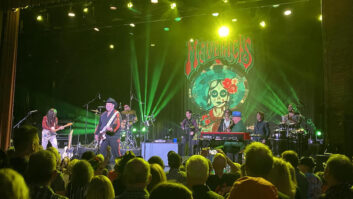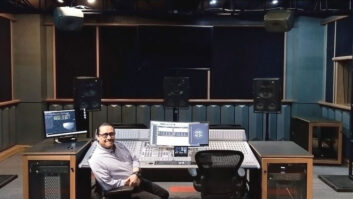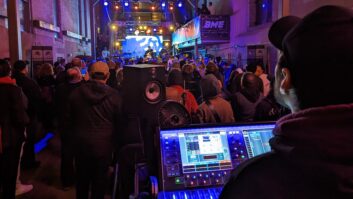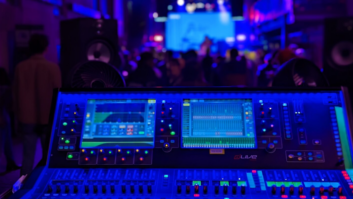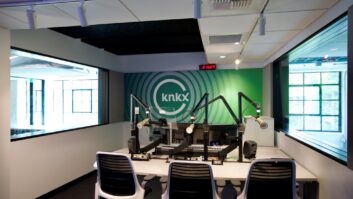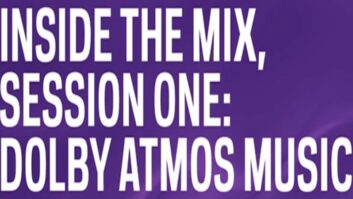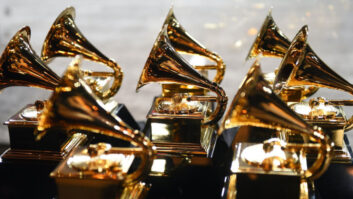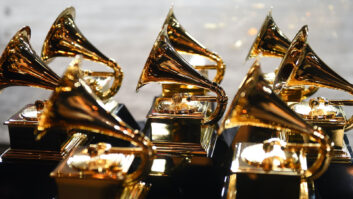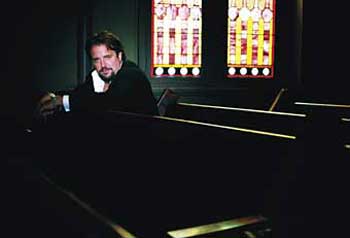

Raul Malo’s latest solo release, After Hours, is one of two albums he cut live with a small group of musicians at bassist Jay Weaver’s Chicken Hill Studios in the woods south of Nashville (the other is a Christmas album we’ll hear in a few months). As former frontman of the Grammy and CMA Award-winning country group The Mavericks, Malo has worked in plenty of high-end studios with major-label budgets. However, his music has always had an indie feel, with its Cuban jazz, pop and rock influences. This time out, Malo and co. took a collection of country classics by the likes of Buck Owens, Hank Williams, Dwight Yoakam and more, and totally rearranged them. An article about Chicken Hill Studio, the personal facility of Malo’s bassist Jay Weaver, will appear in the Coast to Coast section of Mix’s August issue. Here Malo, who co-produced the album with Weaver, discusses the making of After Hours.
How did you choose the songs for After Hours? Were these songs and arrangements already part of your live sets?
I started touring with this band about two years ago, right after You’re Only Lonely came out, and we started just learning some songs, and one of them was [Buck Owens’] “Crying Time.” We tried to come up with different arrangements. Instead of doing them as if they were straight-ahead country songs, we started doing them as if a big band singer was doing them, and we arranged them accordingly, and we thought it was kind of fun to blend the lines between pop and country. The first time we did “Crying Time” live, it was kind of an eye opener. We thought, this really sounds great with this really sparse arrangement with the piano and the upright bass. We thought, we ought to do a record like this.
Country music gets a bad rap sometimes. People think it’s too hokey or too silly, and some of the time whoever’s bashing it is correct. But there is an elegant, more sophisticated type of country music—at least there was at one point. We wanted to show the elegant, more sophisticated side of country music, and I hope we succeeded.
You mentioned in the press that Owen Bradley was an inspiration for this record, and he certainly represented that more sophisticated side of country music production.
Absolutely, yeah. It’s nice to make a record like this of these great old songs. Part of the reason we did old songs was nobody writes songs like that anymore, with the exception of a few people—Dwight Yoakam being one of them.

You did an uptempo arrangement of Hank Williams’ “Cold Cold Heart.” How did that come about?
That is really just a boogie woogie rave up, like something Louie Prima would have done. I’m a huge fan of Louie Prima. We needed an uptempo song, because everything else was really pretty and ballad’y, and I seemed to have recalled a version that maybe The Mavericks had done live at one time and so we tweaked the arrangement a little bit, brought in the key changes and brought in the horns. It was really a communal effort. There were some things where I was very specific and deliberate in what I wanted, but a lot of times it just came out of jamming with the band.
How did you like working at Chicken Hill?
It’s a dream place. It’s cozy and it’s got all the vibe in the world. You can pretty much make a record anyplace these days, but to have a place like that, that’s off the beaten path and you’re not on the clock, so you’re not worried about studio time means you can really just take your time. I realize after making records for major labels all these years, we really didn’t have time to experiment with stuff. You had to go in and get a sound, and boom, record it, because everybody’s on the clock. You do two songs before lunch, and then you do two more, and you call it a day. This time around, we wanted to make sure we had plenty of time to try stuff, and just by the nature of the place, it was a groovy way to make records. We enjoyed every minute of it.
Does the Christmas album have a similar feel?
Yeah, it’s the same band, and sonically it’s even better than this one. The next time around, you just get better at it. I’m very pleased with how they both came out.
When you were with The Mavericks, did that band record live?
We did to some extent. You need to have a really good band to do that. That’s not to say that The Mavericks weren’t a good band, but the Mavericks were good in that sort of bar band live kind of way. But when it came to studio chops, we didn’t quite have it there. We recorded some of it live, but not all of it. By the end, though, by the time we made Trampoline, we did record most of that live.
Jay Weaver said that you provided all of the microphones for the sessions, and I noticed that you acknowledge Korby Microphones in your liner notes.
If you’re looking for great mics, you can go one of two routes: You can try to find an old one that still works and is correct and has all the pieces—and be willing to part with 6 to 10 thousand dollars for one microphone—or you can do what I did. I happened to read about [Tracy] Korby online, and found out he was making these new 47s and 251s and C-12s, and he’s got this convertible system you can change the heads on, and I was fascinated by this. I started doing research, and lo and behold, he’s here in town. So I went over there and saw him, and it turned out he was a fan; he’d seen me play [when he lived in] Pittsburgh, and I talked to him about what we were doing, and he was excited. I bought one of his convertible mics and I use it nonstop. He supplied us with his Blue mic, which is a 47-like reproduction. We used a couple of FET mics on the piano; we used a couple of 251s—one on the bass—and I believe we used a couple of FET mics on the drums as well. It was pretty much an all-Korby session. But I think on the acoustic guitar I played, it may have been an old Neumann small-diaphragm mic Jay had.
After recording this album live in the studio, do you see this now as the way to do it—no going back—or is this just one of many ways to record?
I think for this project it certainly worked, but I don’t want to say it’s the only way to do it, because I’m a fan of building tracks and dissecting and polishing them. But for this particular project, we really wanted to keep it as organic as possible, and that meant that I would have to play and sing at the same time, and I do that live anyway! I do this all the time. People pay money to come and see me do this. Why can’t I do it in the studio? If I can’t do this in the studio, I stink! To me, it wasn’t a big deal.
Barbara Schultz is an assistant editor of
Mix
.

READ:
The printed article!
